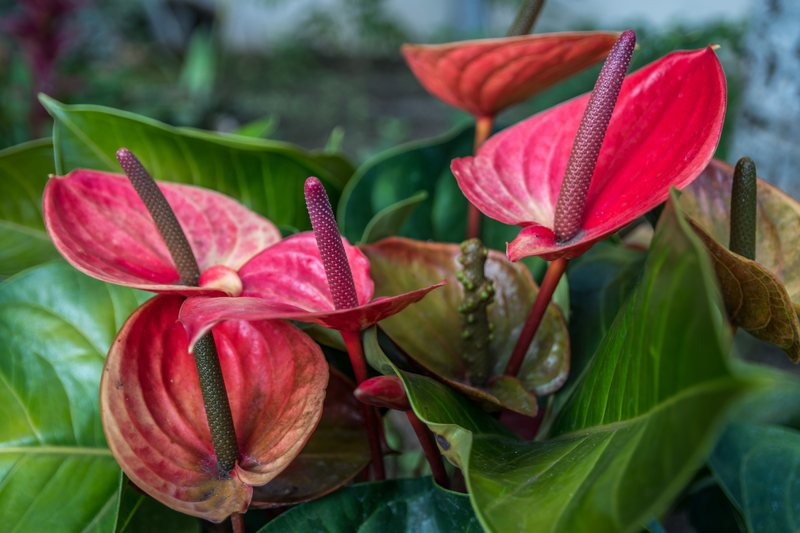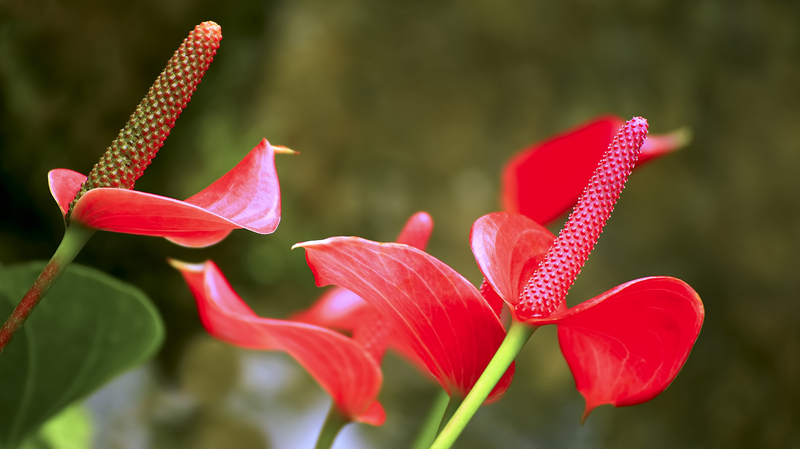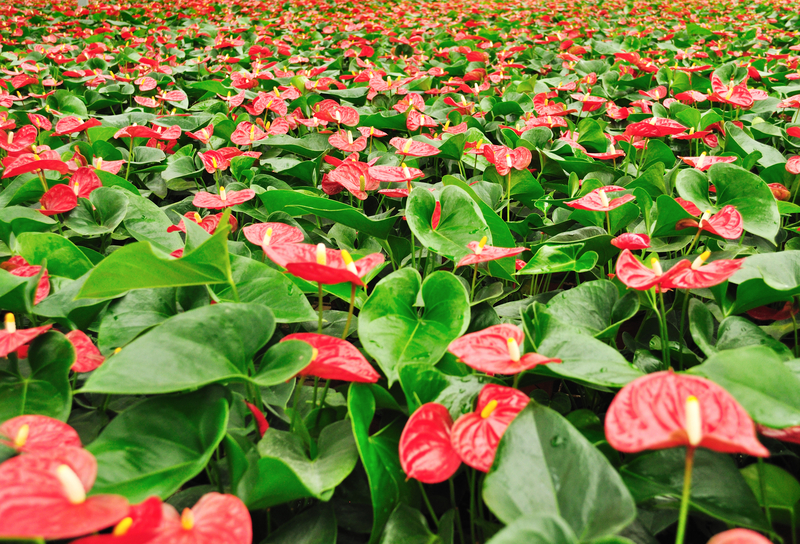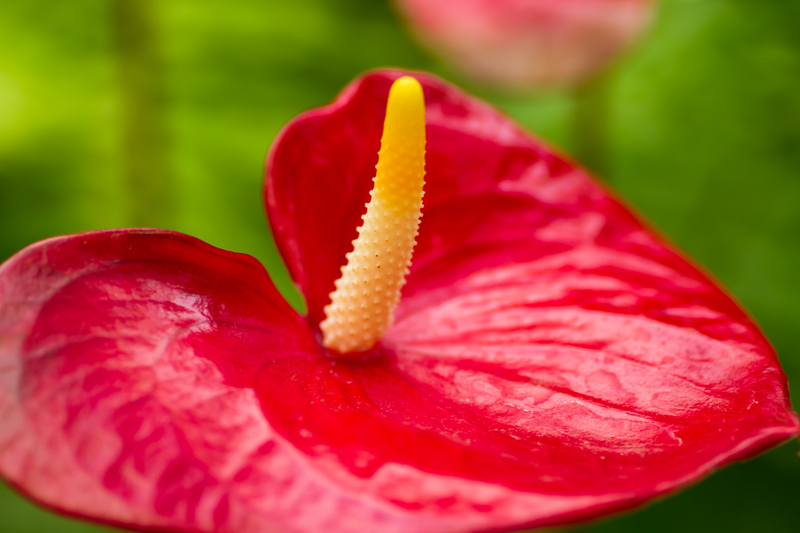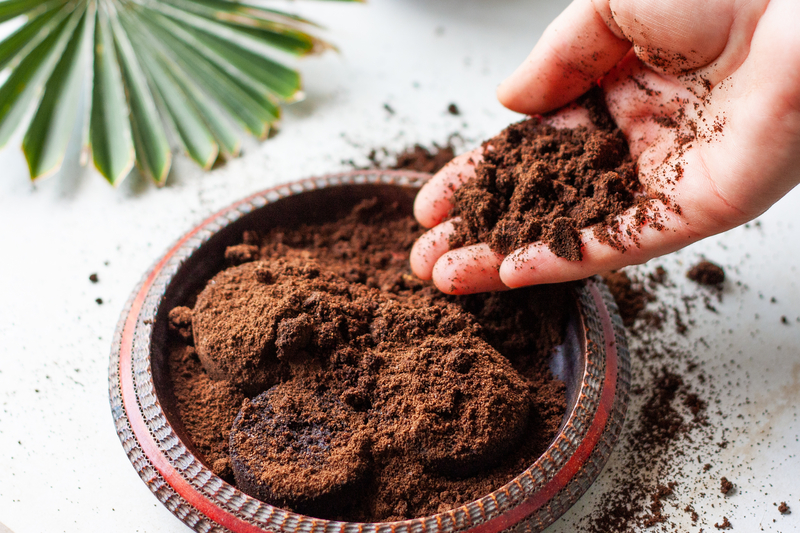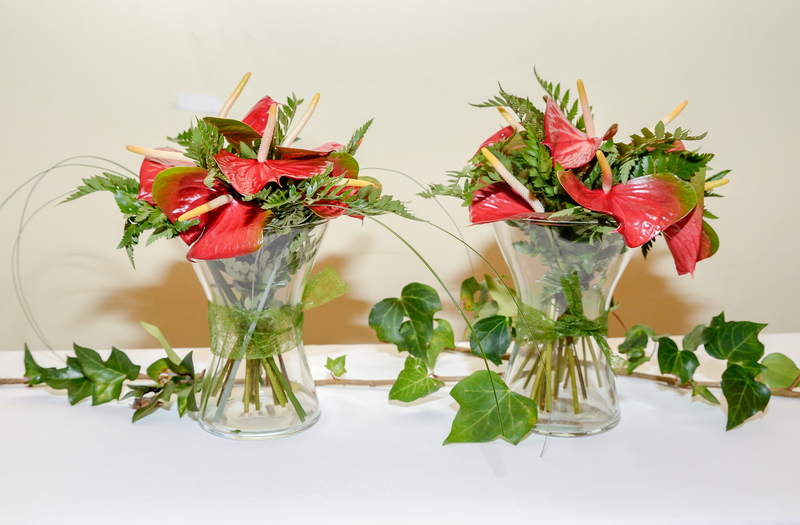A symbol of hospitality, the vibrant blooms of the anthurium plant can last for months at a time. While popular during the Christmas season, the anthurium plant is a colorful staple to any plant collection. With correct amounts of water and sunlight, this plant can thrive under the care of all levels of plant enthusiasts. Here is how to take care of an anthurium plant!
Other Names
- Flamingo Flower
- Tailflower
- Laceleaf
What Soil Works Best for Anthurium Plants?
The best potting mix for this type of plant is a combination of half potting soil and either half orchid soil, peat moss, or perlite. No matter what combination you choose, you should make sure to put the plant in a well-draining pot. The well-draining pot helps reduce the risk of root rot, which is a common problem.
Should I use Fertilizer?
A Tailflower only needs fertilization about once every three to four months. Using quarter-strength fertilizer with a higher phosphorus number will create better blooms.
How Much Sun Does an Anthurium Plant Need?
Anthurium plants thrive in areas with indirect light. Placing your Laceleaf plant in a spot in your home that receives low light will lead to a slow-growing plant with fewer flowers. A signal that it is not getting enough light is when it has dark, green leaves.
The leaves of anthurium plants will turn yellow, and the tips will become brown if it stays in direct sunlight. Yellow and brown spots on the leaves indicate that the light is burning the plant. You should move the plant to an area with less sun if you notice that.
What Temperature Works Best for Anthurium Plants?
Anthuriums do best in an area of your home between 65 to 80 degrees Fahrenheit. The room should not get any colder than 60 degrees at night. Be mindful of keeping this plant near a cold window during the winter.
Do Anthurium Plants Enjoy Humidity?
Anthurium andraeanum is native to the rainforests of South America, which is why this type of plant thrives in a high humidity environment. To help create a humid climate for the plant, you can mist it daily. Consider investing in a humidifier during the dryer winter months or use a pebble tray to help add moisture to the air.
How Often Should You Water an Anthurium Plant?
While Laceleaf plants require regular watering, they are especially susceptible to overwatering and root rot. You should only water tropical plants when the top of their potting soil feels dry to the touch. When kept inside, this will happen about once a week. Keep watering until the water comes through the holes at the bottom of your pot.
If you let your flamingo flower dry out too much, its growth will slow down. If this does happen, you can soak your orchid for an hour to help rehydrate the roots.
What Size Do Anthurium Plants Grow to Typically?
Your houseplant can grow about a foot tall when receiving proper plant care. However, this plant tends to grow slowly even with the appropriate light, water, soil, and climate conditions.
What are the Most Common Bugs?
As with most orchids, the most common pests affecting anthurium plants are scale, whitefly, mealybugs, aphids, and spider mites. If you don’t remove these bugs, your houseplant will have trouble producing new growth, become limp, and die.
If your anthurium leaves have yellow dots, this is a sign your houseplant has spider mites. Aphids or mealybugs can cause mottled leaves. Quick blasts of a bit of water can help dislodge the bugs from your plant. If needed, an oil spray or horticultural spray can remove stubborn insects without harming your plant.
Most Common Diseases
A common fungus that often infects the roots or lower stems of anthuriums is Rhizoctonia. This type of fungus causes your plant to become waterlogged, making the stem look floppy and weak.
Do Anthurium Plants Like Coffee Grounds?
Adding coffee grounds to the potting soil of your anthurium is not recommended. Coffee grounds can cause an acidity or nutrient imbalance, negatively impacting the health of the anthurium roots.
How Often Should You Repot Anthurium Plants?
Your anthurium needs repotting when the roots fill up the pot, which happens every two years. When repotting your tropical plant, you should select a new pot no more than two inches larger. Choosing one with adequate drainage holes is crucial when picking a pot for your orchid.
Repotting this houseplant is easy. Fill the pot about a third of the way full with your homemade potting soil. Place your anthurium in the pot and lightly pack soil around it. Give it some water, and then place it in an area that receives indirect light.
How Do You Propagate an Anthurium Plant?
You’ll know your anthurium is ready for propagation when it begins to send out air roots. These air roots will look knobby and appear right above the soil line. You can then propagate your plant with either a cutting from the stem or an air root.
With scissors, cut off either an air root or piece of stem measuring at least six inches long with a few leaves still attached. Place that cutting into a new, well-draining pot filled with potting soil. Water immediately and place the pot in a warm area of your home with indirect sunlight.
It takes about four to six weeks for noticeable new growth to appear.
Are Anthurium Plants Toxic to Pets or Humans?
Anthurium plants are toxic if humans or animals ingest them. Stomach pain, skin or mouth irritation, and vomiting are common problems if you digest this plant.
Climbing vs. Non-Climbing Anthurium Plants
Anthuriums are climbers by nature, often found in rainforests growing on other plants rather than in soil.
If your plant is having trouble supporting itself, you can use a small trellis or stake in the pot. That stake will act as a way for the plant to latch on and grow straight in the air.
Conclusion — How to Take Care of an Anthurium Plant
With proper care and the correct humidity levels, anthurium plants can be a great addition to your home. The plant thrives with indirect light, so be mindful of the sun.
Similar Posts:
How to Take Care of a Dieffenbachia Plant

